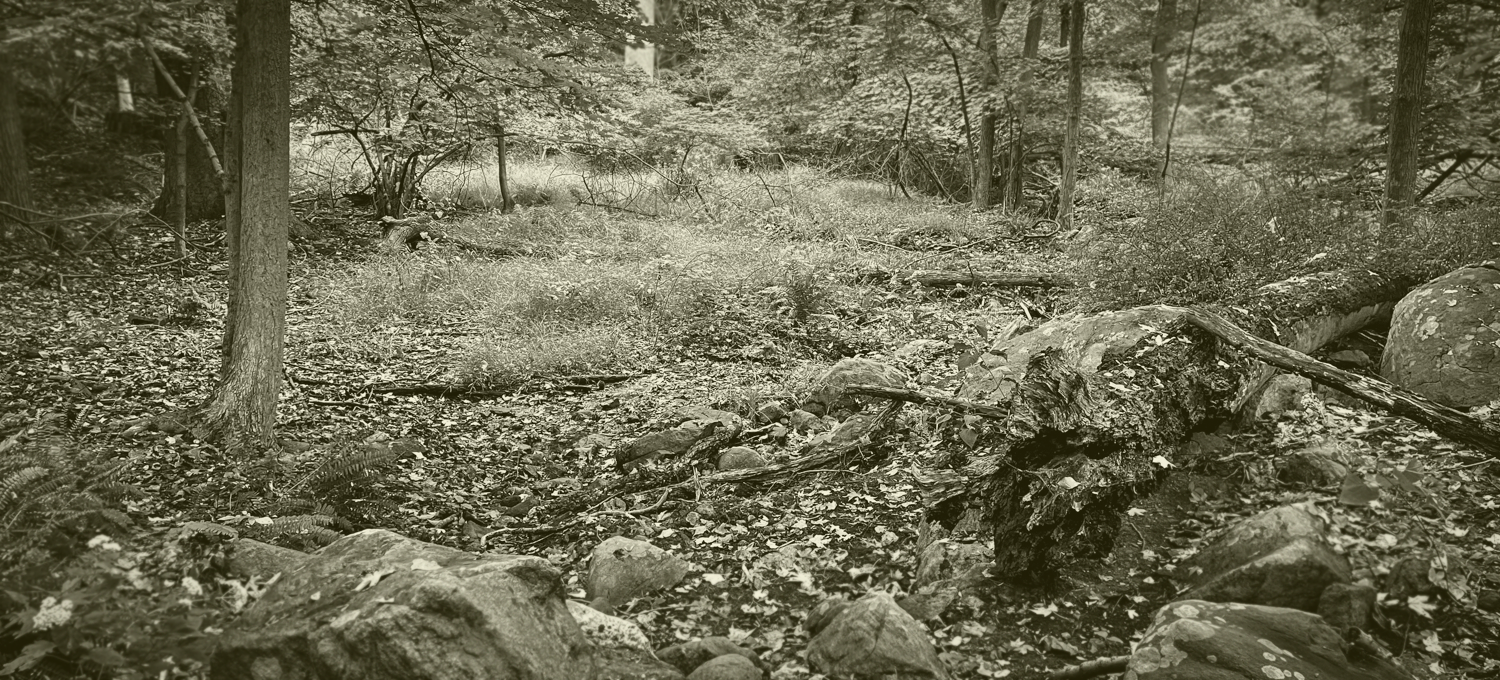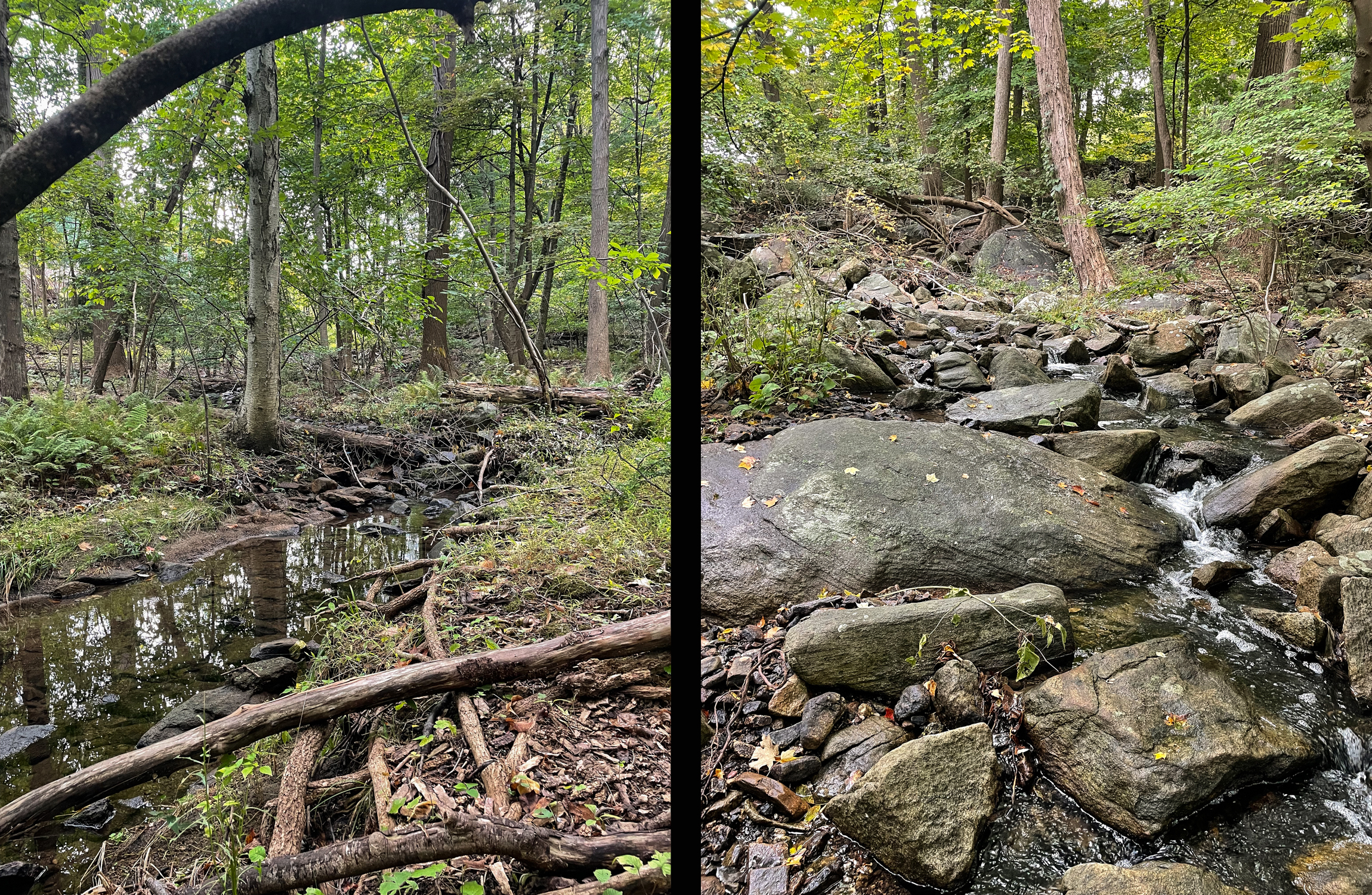Wood Thrush Glen
 Wood Thrush Glen, looking east. September 2021.
Wood Thrush Glen, looking east. September 2021.
Although the natural ravine to the south of Log House was first called Wood Thrush Glen in T. Gilbert Pearson's article "The Birds on Craftsman Farms," which appeared in the August 1914 issue of The Craftsman, Stickley's entrance to it from the sunken garden suggests it was a feature important to him as he laid out the residential core of the property. A survey of the trees taken for George and Sylvia Farny in October 1917 listed tulip tree, red oak, white oak, red maple, ash, chestnut, and elm as the primary species forming the canopy, with undergrowth that included dogwood and witch hazel. While time, development, and successive blights–starting with the chestnut, then Dutch Elm disease, and more recently the emerald ash borer–have irreversibly altered the composition of these stands, there are still large, mature tulip trees and oaks that date from Stickley's time and still appear to be in good health. Most of the large ash trees in the area, as throughout a majority of the United States, show signs of infestation, from the canopy thinning and crown dieback, to the distinctive D-shaped holes, to increased woodpecker activity and bark loss that is sometimes referred to as "flecking" or "bronzing." In place of the elm, chestnut, and ash a vigorous population of beech trees, the occasional dogwood, and other species has taken hold.
Pearson's poetic description of Wood Thrush Glen is an important document for our understanding of the property, not only because he delighted in naming each species of bird he sees or hears, but because he recorded details outside those which appeared in the tree survey and often captured the essence of his experience. "No axe," he claimed, "has profaned the natural growth in the glen which widens as it extends away from the sunken garden... From the cool damp shade morning and evening the spiritual flute-like song of the wood thrush rings out like a call to prayer." What he describes is, much like it reamins today, a natural glen devoid of formal paths or (as he calls them derisively) "improvements." Describing his walk with Stickley on an early summer morning, Pearson recalled: "We waded knee deep in rank growths of fern and jack-in-the-pulpits until we reached the brook whose murmur had lulled us to sleep the night before. There was no stereotypical place to cross it, for bear in mind there is nothing formal in the Wood Thrush Glen. The pebbles and rocks all lay as the stream had seen fit to place them." There is a sense, of course, that Pearson's descriptions are a bit too black and white, for if the Stickleys and their guests are spending time in Wood Thrush Glen–and indeed there was a formal entrance to it from the sunken garden–than there were likely paths worn into the landscape from use, even if it was not manicured and maintained.
 Wood Thrush Glen. September 2021.
Wood Thrush Glen. September 2021.